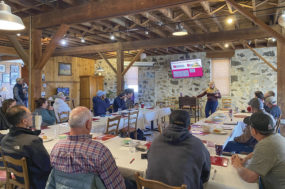For most Americans, a potato is a potato (or maybe a po-tah-to). But for researchers involved in developing new potato varieties, specific traits make different spuds appropriate for different end uses – from chips and french fries to table stock.
Dr. Rhett Spear of the University of Idaho (UI) Aberdeen Research and Extension Center is one of those researchers. Spear had a background in chemistry but dove into potato research at Washington State University before coming to Aberdeen.
“The UI program works in conjunction with Washington State University, Oregon State University and USDA-ARS (Agricultural Research Service) to breed and evaluate new potato varieties,” Spear says. They focus on developing potatoes for growth in the Pacific Northwest (PNW) but work with other researchers to also test these varieties in Colorado, Texas and California.
The end result? Potato varieties with more desirable traits than those used for the past several decades. These may be end-quality traits or agronomic performance traits. With multiple uses for potatoes and a broad range of target climates, the program has a broad portfolio of spud releases to its name.
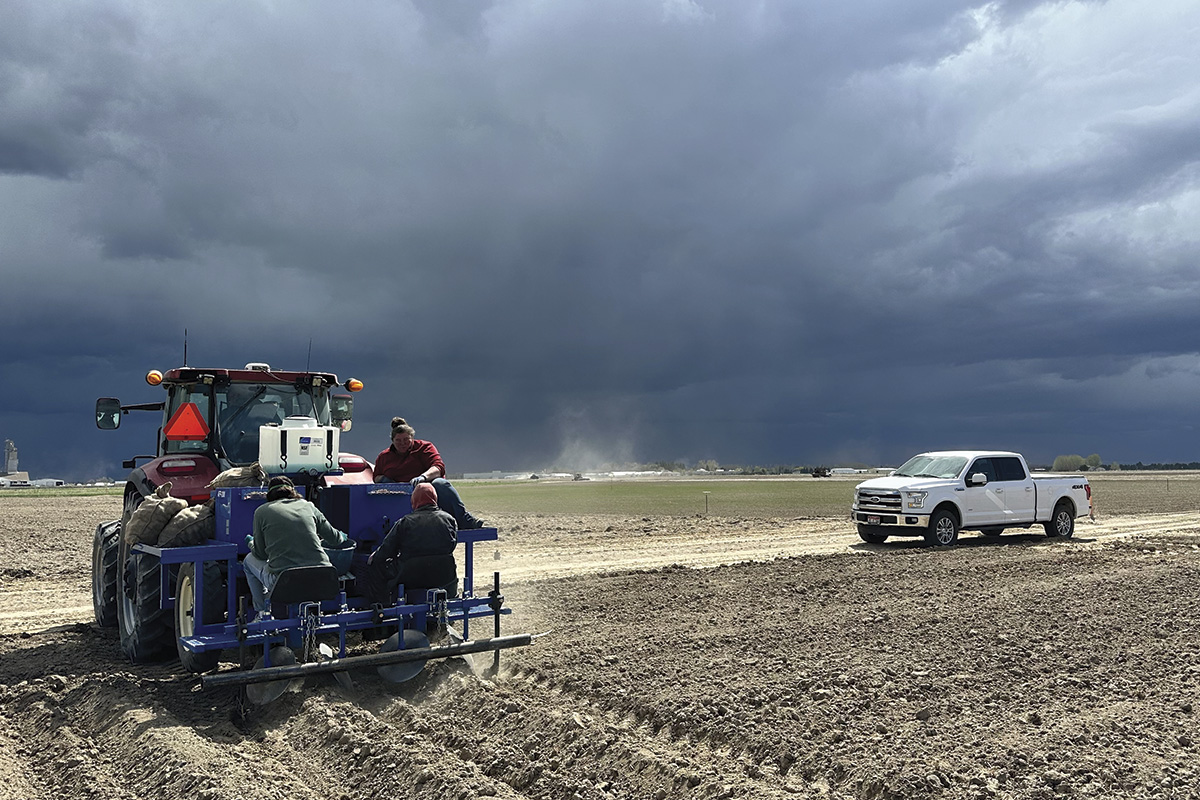
Research specialist Melissa Bertram, research aide Carla Poulson and research technician Chelsey Lowder plant 2023 potato trials at Aberdeen Research and Extension Center. Photo provided by Dr. Rhett Spear.
A potato for all applications
For most of us, our mental image of a potato is the one in stock at the local grocery store, probably a Russet Burbank or Russet Norkotah. “For table stock, you’re looking for eye appeal,” says Spear. This is the classic “Idaho potato,” easy to peel with a moderately dense interior and consistent oval shape.
A french fry potato is similar in shape. The industry wants oblong potatoes, to maximize fry yields. Another important trait is the potato’s specific gravity, which is a measure of its dry matter content. Starch is the most important contributor to this factor, which is determined by a number of conditions throughout the potato’s growth and development. A high specific gravity is needed to avoid limp and oily french fries. Russet Burbank, Ranger Russet and Clearwater Russet are commonly grown for fries.
Potato chips are best made from potatoes with white flesh similar to that in fry potatoes, with an even higher specific gravity. However, chippers prefer a spherical shape rather than oblong, between a baseball and racquetball in size. Atlantic is an example of a chipping variety that has been used extensively in the industry, although the program evaluates new options yearly.
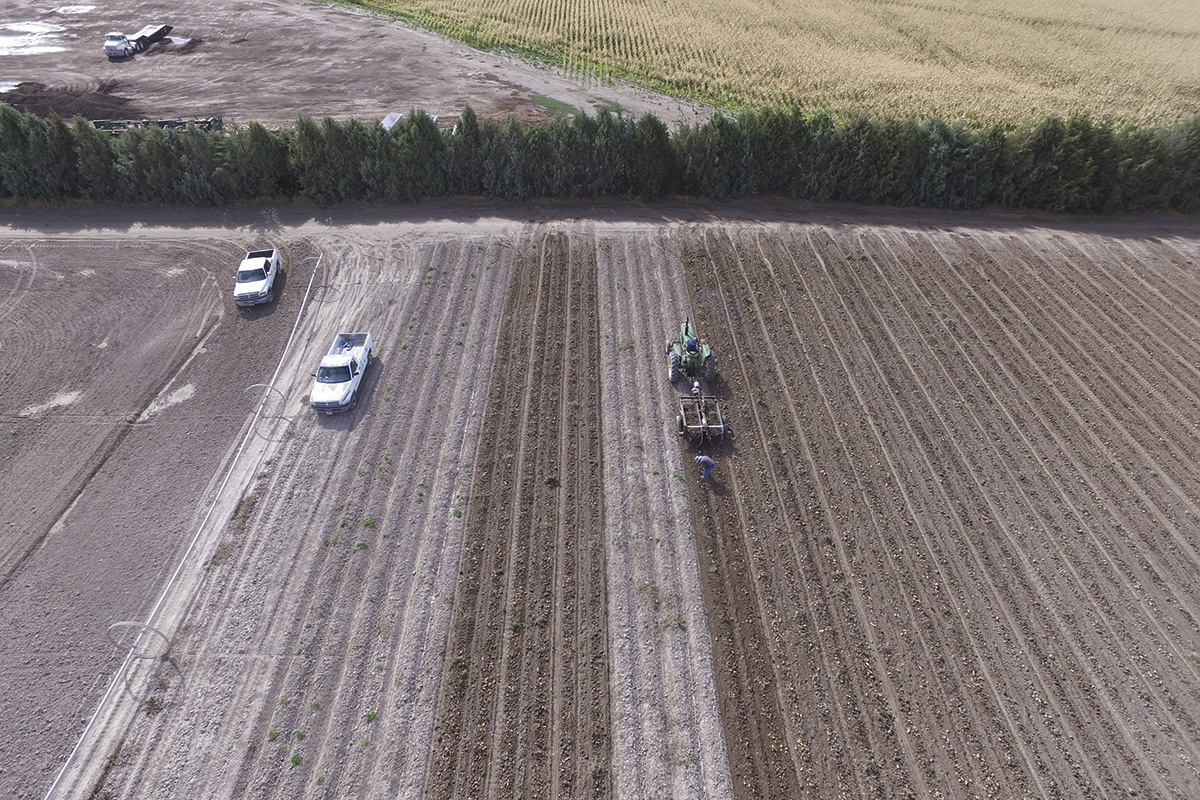
Part of the research process requires visual inspection of freshly harvested potatoes. Photo provided by Dr. Rhett Spear.
Raising the bar
With a number of potatoes already on the market to meet various goals, new varieties continue to improve producers’ ability to reduce inputs and match consumers’ demands. Though current options are good, there is still room for progress.
“Take the Russet Burbank for example,” Spear says. Accounting for a large proportion of potato acres in Idaho and the PNW, it is an industry standard and often used as the “control” against which new varieties are tested. “It’s grown on a lot of acres and there’s a lot of use – but it’s sensitive to lots of stressors,” he says. High temperature is one such stress, to which the potato responds with yield loss and quality issues. Disease can also be a problem for Russet Burbank.
“It also requires a lot of fertilizer and water,” says Spear. He points toward the development of alternative potato varieties as one way of reducing inputs without negatively impacting the yield or quality. Disease resistance, heat tolerance or competitiveness in new potato varieties may all contribute to this goal. “We want to be good stewards of the land,” he says.
With so many directions for improvement, the Tri-State Program always has potatoes in various stages of the testing process. Currently, Spear says, “We have a couple varieties in advanced trials with virus resistance.”
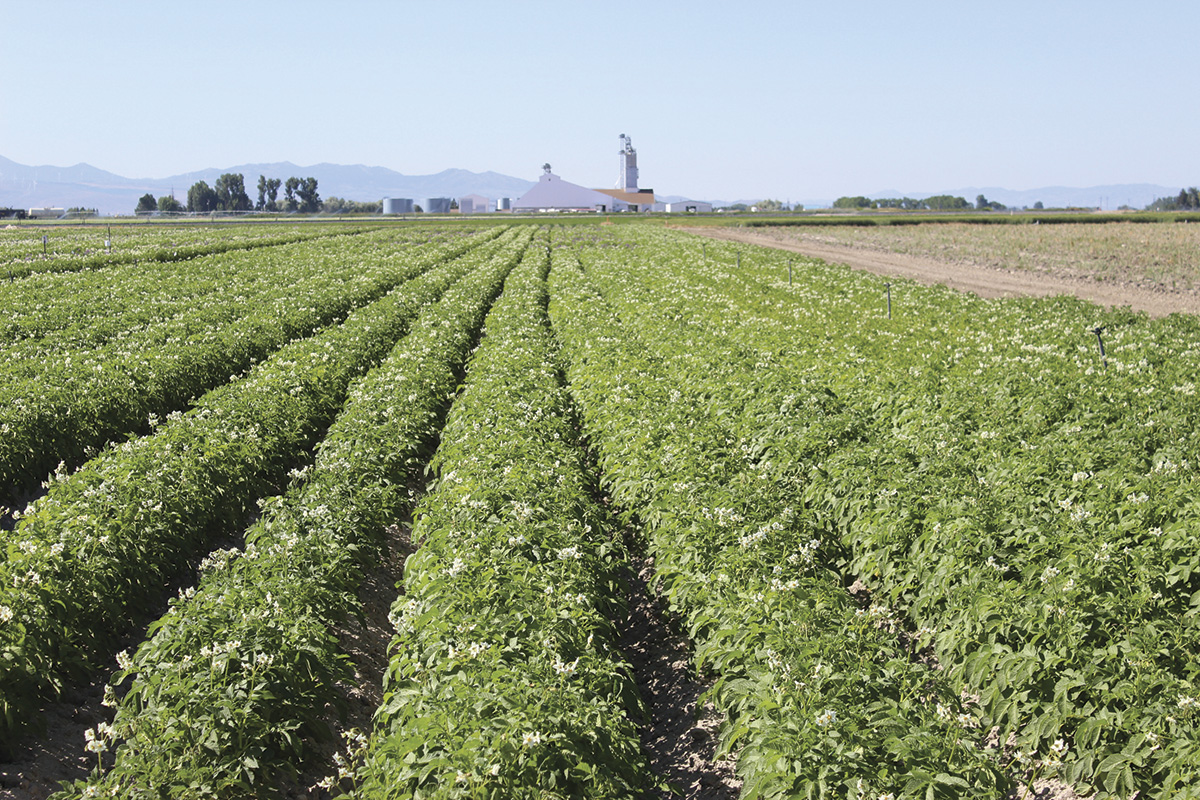
Trial potato plants grow at the Aberdeen research center. Photo provided by Dr. Rhett Spear.
Investing time in a new variety
The process of developing a new variety begins when the ARS crosses two existing potato varieties. The ARS grows some early generations, then each of the participating universities incorporates the test varieties into replicated field trials. Then the researchers compare notes to decide which varieties should advance and which should be dropped.
At Aberdeen, most of the potato trials occur on the research and extension center grounds. “Our program evaluates how they grow, and measure yields and quality,” says Spear. Yield is fairly straightforward. Quality, however, will mean different things depending on the desired end use. Evaluation may include measuring individual tuber size and shape, calculating density, looking for defects, describing color or frying potato chips in the basement.
Many promising varieties fail to meet industry standards and are dropped in the early phases of trials, but a few are kept on. “Once they advance to the point where they might get released to the industry, my program looks at things like fertilizer [requirements] and plant spacing,” Spear says.
Spear also works with the Kimberly Research and Extension Center to evaluate how well the potatoes hold up in storage. While density, shape, color and taste are important to the end user, one of the potato’s most noteworthy characteristics is its capacity for staying fresh for up to a year after harvest. How a variety responds to storage will determine whether the consumer sees it at all.
“We try to release something every one to two years,” Spear says. The most recent variety to come out of the collaboration is the little red roasting potato Becca Rose. Although the Tri-State Program focuses its breeding efforts on the needs of PNW growers, Michigan growers were the driving force behind this potato’s release. Its size profile and common scab resistance are expected to help it thrive in the Upper Midwest.
“After the initial crosses, it takes 10 to 15 years to go through the whole process,” Spear says. With results from at least three diverse field testing locations and a decade’s worth of weather variability, the program can stand behind each new variety and be confident in the management recommendations that accompany them.
Other breeding programs exist around the nation, but it is a boon to Idaho growers to have one that prioritizes local climatic considerations and desired end products. After all, it turns out that the diners' question “Do you want fries or chips?” starts not in the kitchen, but with the breeder.
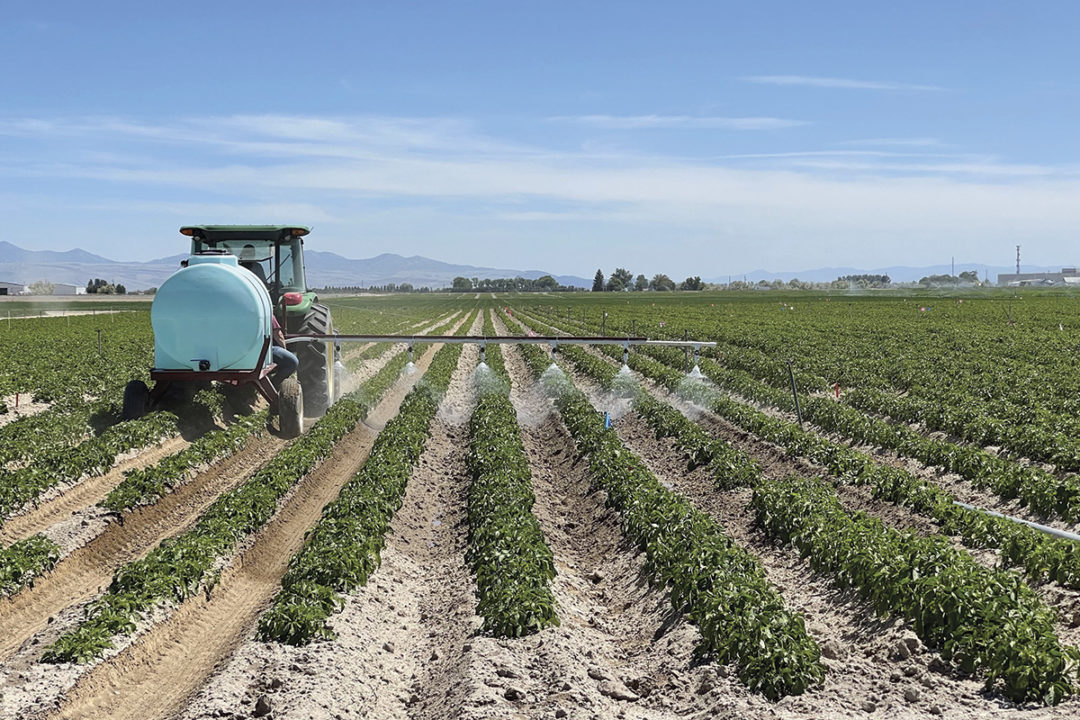

.jpg?t=1687979285&width=640)



